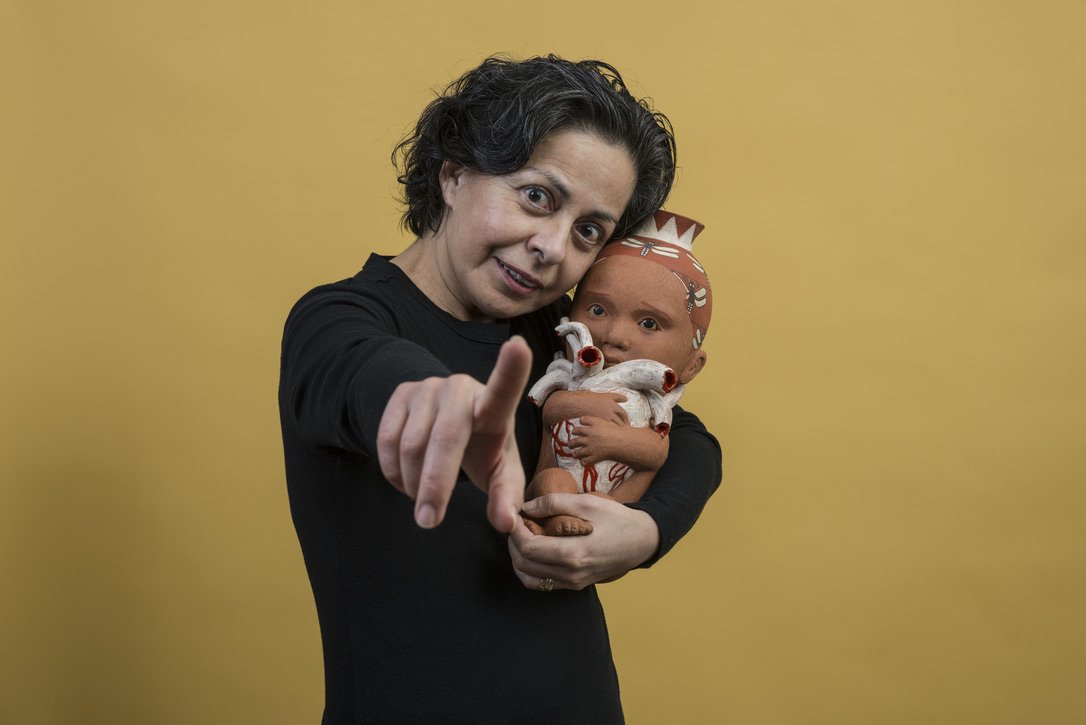
Curated by Daniel Arturo Almeida | February 9 - May 10, 2024 at the 20 Cooper Square Gallery
Re-collections surveys cultural extraction, Eurocentric archeology, and biased museology. Echoing an increasing demand for the restitution of looted cultural artifacts and monuments, the exhibiting artists unveil co-opted narratives obscured under the lens of ethnographic scholarship. Their collective artwork deconstructs colonial myths by destabilizing manipulated frameworks of knowledge conditioning, history making and museum display. From probing conspiracy theories plaguing the understanding of ancestral civilizations, to exposing the unethical auctioning of cultural heritage, to manifesting liberatory practices of preservation beyond the institutional gaze, the exhibition voices a need to author history and redefine heritage outside of outdated structures of legibility.
Re-collections unmounts colonial histories, fostering a space to transgress entrenched narratives and the methodologies behind their documentation, transcription, and dissemination.
Nyssa Chow contests the very notion of archiving against the intimate act of preservation. Your Archives Cannot Preserve Us speaks of worlds and ways of living lost to the plunder of coloniality. For this social practice artwork and sculpture, Nyssa and her mother returned to the ruins of their generational family house by the sea in Trinidad. They collected things that were still theirs and burned them. The ashes become a testimony to the vanishing of entire ways of life and a refusal to forget that the world her loved ones cherished was precious. Chow explains, “Our disappearing lifeworlds created the artifacts that sit in museums. This work challenges the logic of coloniality that seeks to preserve our objects but does not preserve our lifeworlds.” Soñando con Ingapirca and Virutas are part of a series of multimedia artworks by Karina Aguilera Skvirsky that emerged from years-long research on the myths and conspiracy theories surrounding Ingapirca, an archeological site in Ecuador carrying unique features that differ from the architecture canon of the Inca Civilization. The temple is the result of ancestral stone working techniques practiced by the Inca but using the labor of the Cañari, a local Indigenous community colonized by the Inca Empire in the early 16th century and enlisted to build massive monumental structures. In addition, it was built in the shape of an ellipse which is one of the only examples of Inca architecture using that shape. Like Machu Picchu, the uniqueness of the site has been distorted by pseudo-archaeologists who speculate that the engineering feat is the product of an advanced extraterrestrial civilization. This sort of racist theory has plagued recorded history portrayed from a eurocentric gaze.
Roxana Barba's video installation, De Huacas y Huaqueros, foregrounds the excavation and contraband of pre-Columbian artifacts ranging from gold, textiles, jewelry and ceramics. Among these are earthen vessels known as huacos, linked to ceremonial and everyday life uses. The term "huaquero'' is used in Peru to describe those who dig into Peruvian soil searching for extant huacos and valuables. Huaqueros work under deplorable and often life-threatening conditions in hopes of cashing a modest profit by selling their bounty to a third party, who later resells the artifacts on the Pre-Columbian antiquities market for thousands of dollars. A vast number of items sold through auction houses lack recorded provenance, accentuating the looting of the Andean country’s cultural heritage. A vast number of items sold through auction houses lack recorded provenance, accentuating the looting of the Andean country’s cultural heritage. In A Juracan of Feels, Estelle Maisonett frames the image of a 1000-1500 AD Taíno pendant auctioned in 2021 by Christie’s in Paris as part of a controversial collection of thirty eight Taíno artifacts. Maisonett uses collage and acrylic to convey the flattening and sterile commodification of invaluable pre-Columbian and Taíno material culture. Her artwork echoes the international outcry for the works to be returned to their ancestral communities. Nicole Marroquin’s Gag is a mixed media installation featuring a life-size earthenware figure emerging from the wall opening her mouth to expel a litany of heteropatriarchal creatures perched on a deep purple bile in the shape of a speech scroll. Marroquin uses a rich parodic language full of ironical hybrid forms to poke at stories connected to colonial thinking. The scroll projected to the side features a collection of matador figurines, long-haired gun barrels, and nippled chilis that speak of violent colonial systems. The satirical transformations of these icons exposes and stifles the visual language of heteropatriarchal power. Gag also prompts the viewer to think about how history is articulated and disarticulated to service doctored narratives. In her series A Mi Vida, Kukuli Velarde creates several portraits of her daughter, Vida, embodied in the form of pre-Columbian vessels. Re-collections houses two of the earthenware sisters, A Mi Vida IX and A Mi Vida VIII. Nestled atop strollers and shielded from the museological display, the works underscore the vulnerability of children under oppressive systems that devalue life.
Morel Doucet’s Black Maiden (Daughters of the Copper Sun) is a sculptural bust of a woman holding her head high with a peaceful yet commanding expression. Glazed in a deep blue, the bust sits atop a tall pedestal, placing the eyes of the figure at a higher elevation, directly meeting the gaze of the viewer or glancing from above. The display gives agency to the subject and calls into question the hierarchical dynamics of looking and being looked at. The blue hue is a central motif in Doucet’s practice “as it historically possessed the power to safeguard enslaved Africans and their descendants, such as the Gullah Geechee, from malevolent spirits. This concept resonates with the tradition of hanging blue glass bottles in trees to ensnare evil marauders.” Reflecting upon the intersection of memory and coloniality, Marisol Ruiz’s Thursday afternoon, wishing for peace, and thinking of you articulates a “critique on colonialism’s unexpected intimacy.” Within her paintings, she employs illusionistic, abstract, and patterned frames at the fringes of the overall composition. These frames act as windows or portals, prompting us to recognize that what we perceive is a constructed reality. In the center of the image, a state of flux unfolds, unraveling the ornate markers of settler colonialism. La Eterna Injusticia is a series of multimedia photo collages by Martín Wannam that question the machinations of heteropatriarchal ideology manifested through public monuments. The artwork frames a collection of images from iconic statues scattered across Guatemala City, covered by brown silhouettes that both acknowledge the presence of the effigies while negating their image and the ideologies they represent. Wannam describes the existing monuments as beacons of “violent, oppressive histories, especially in relation to treatment of the LGBTQ+ community in Guatemala.” The silhouettes intervene to reimagine each monument through a cuir lens.
Curated by Daniel Arturo Almeida
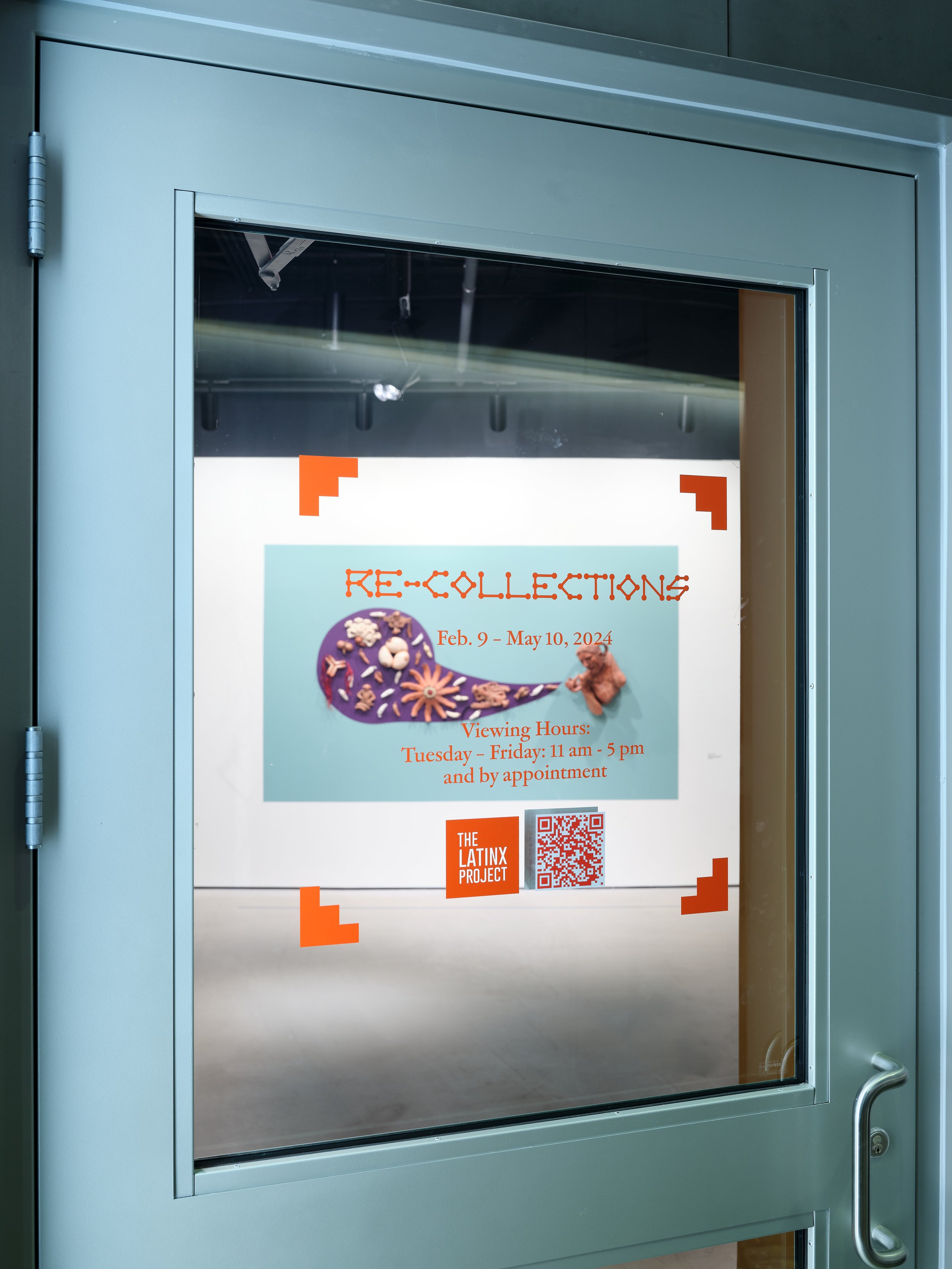
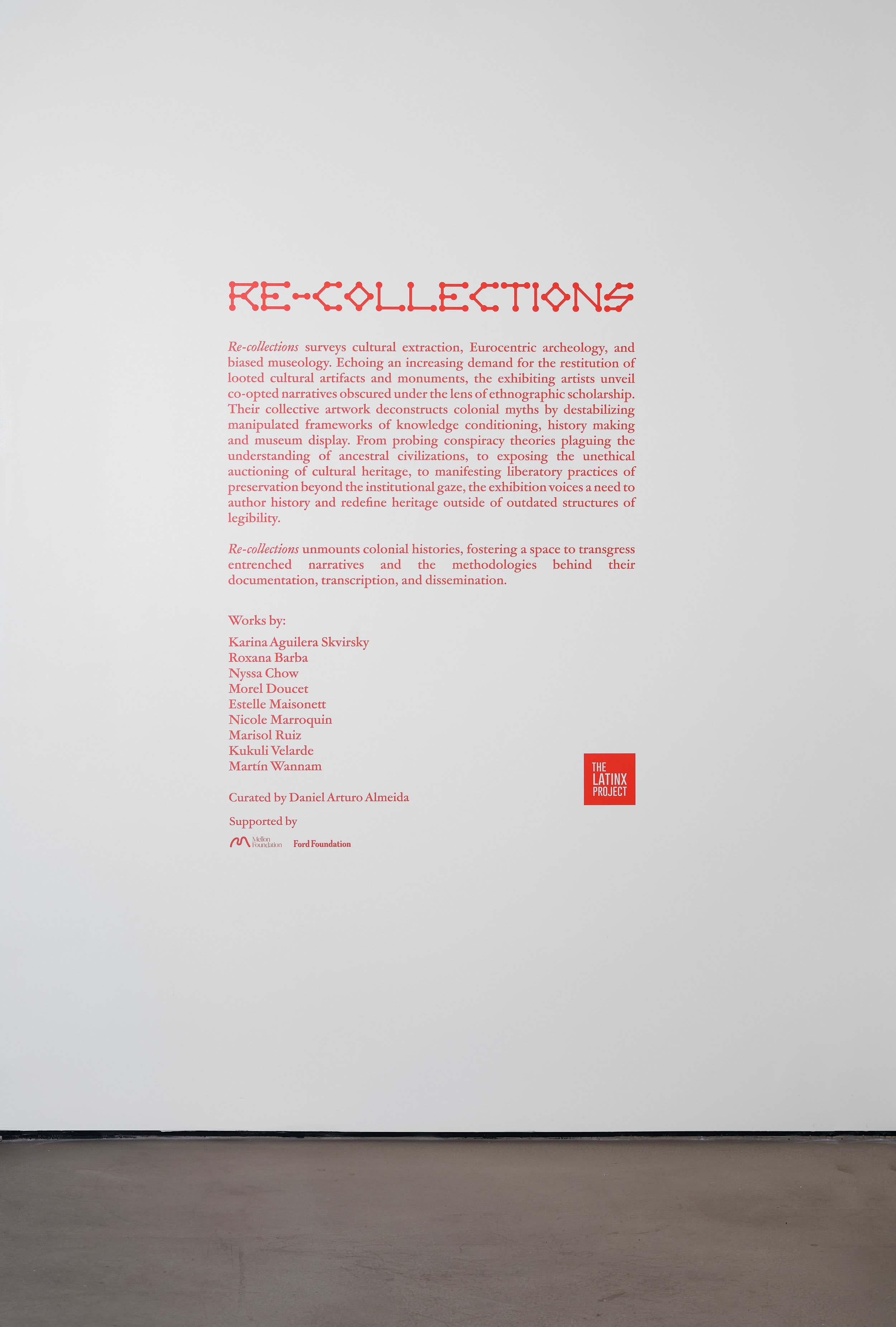
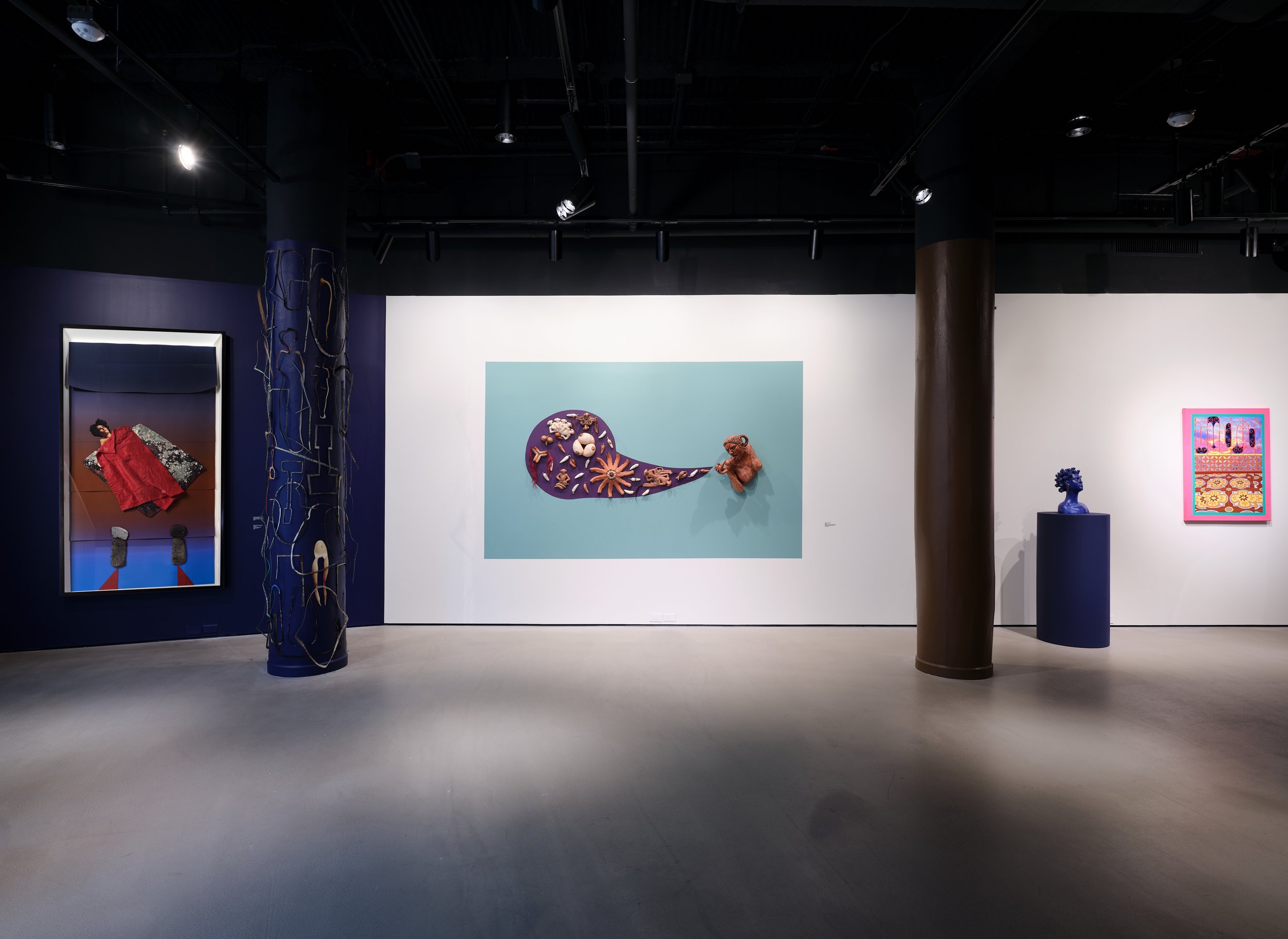

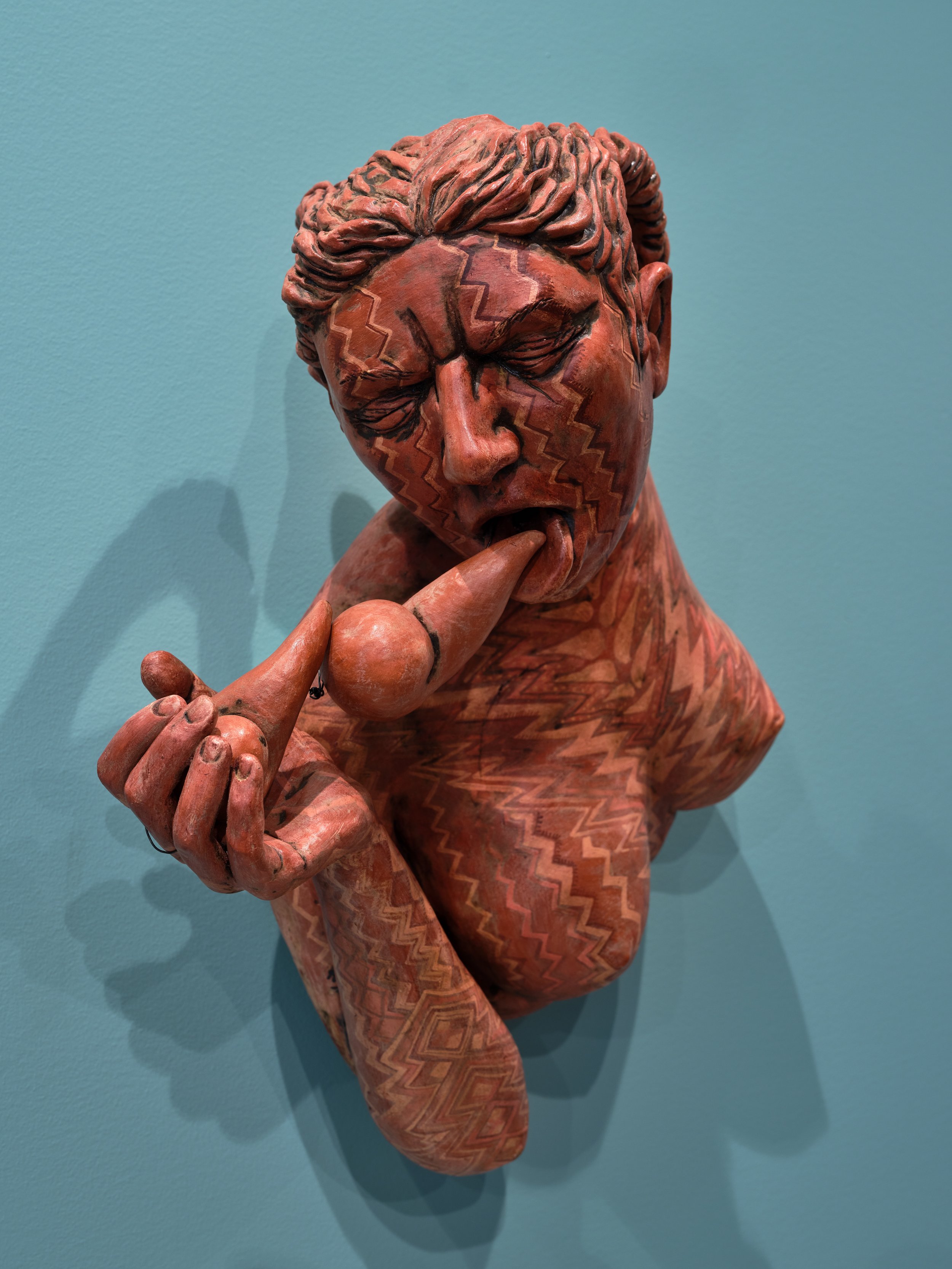
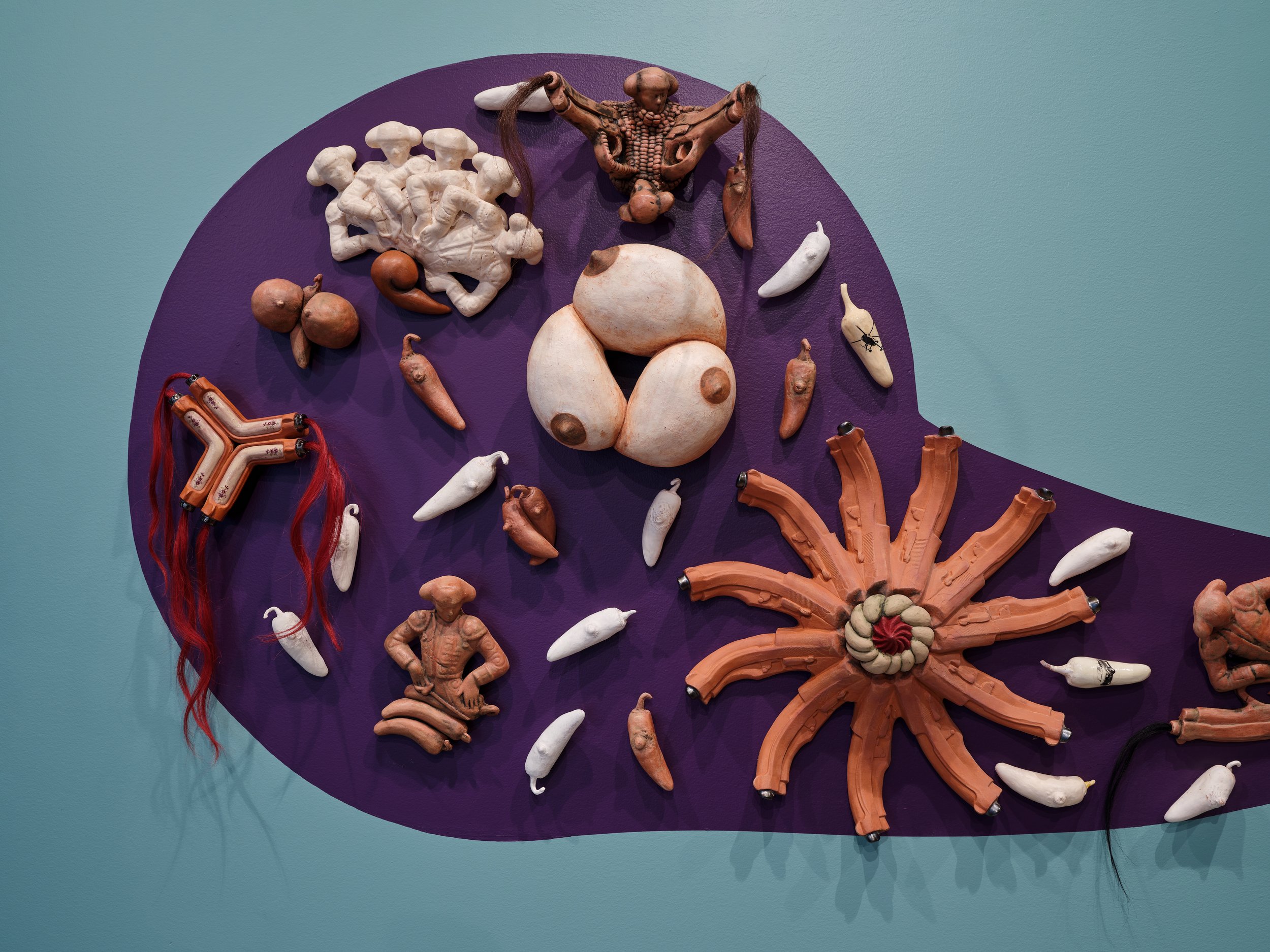
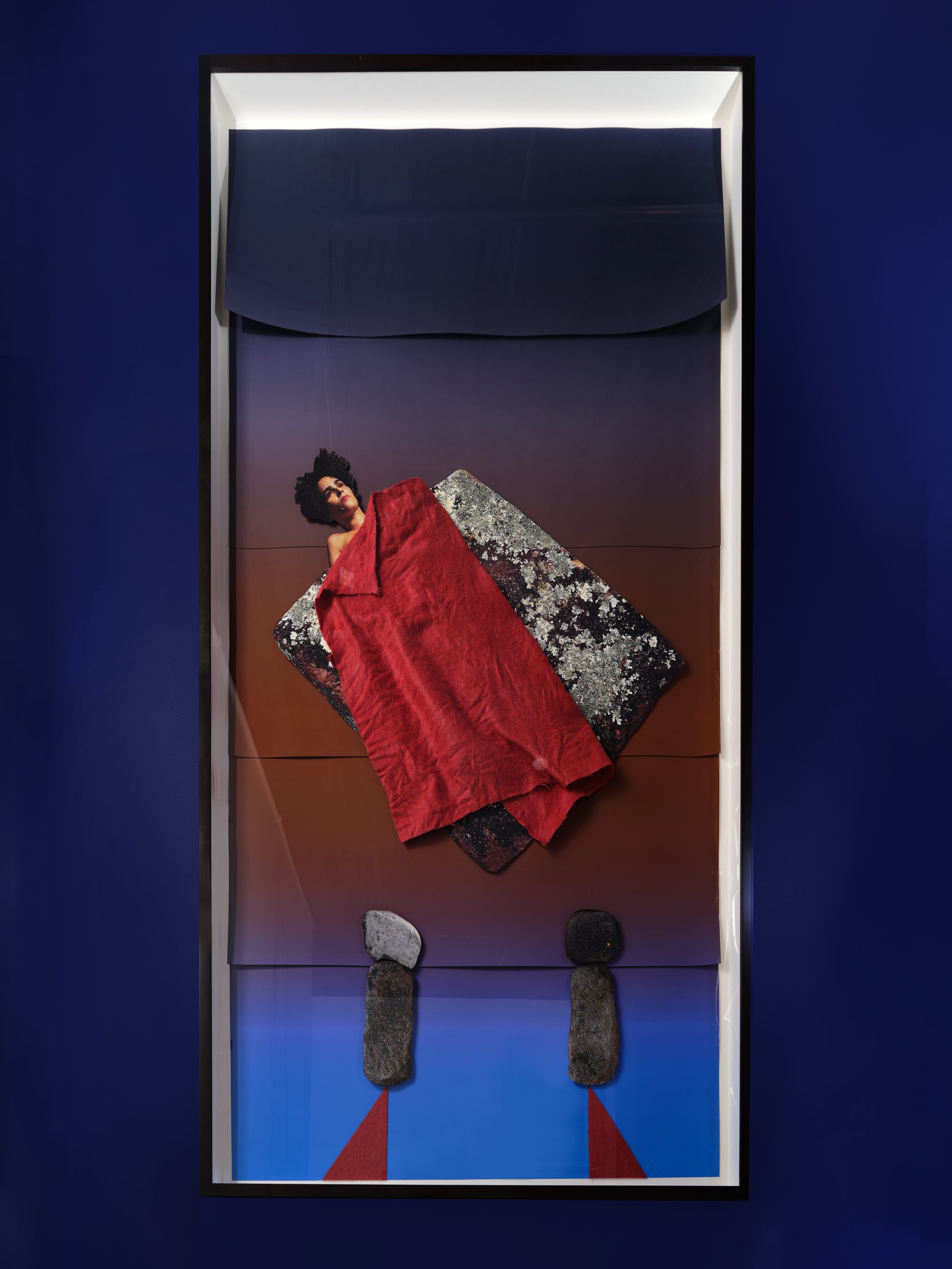
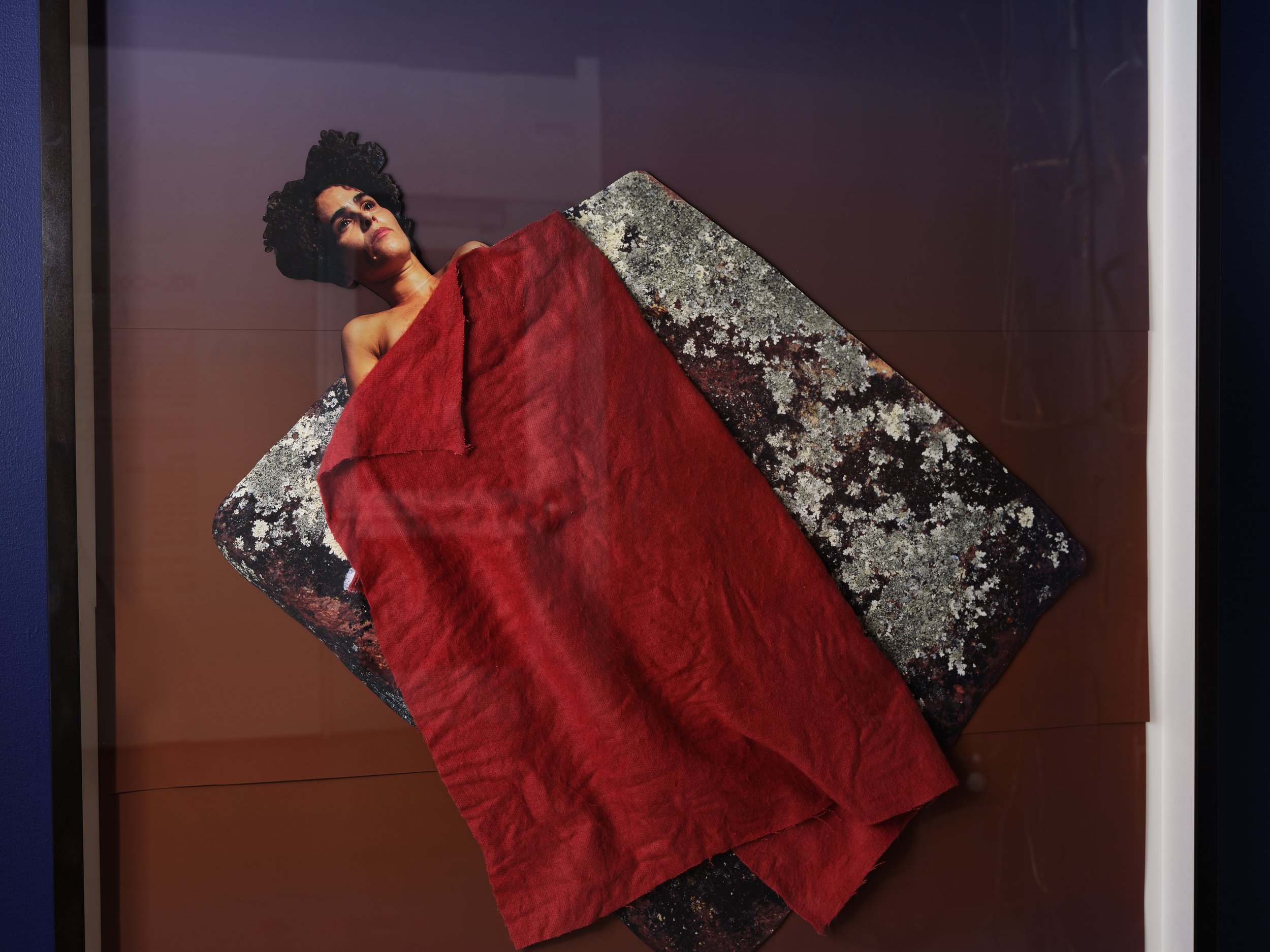

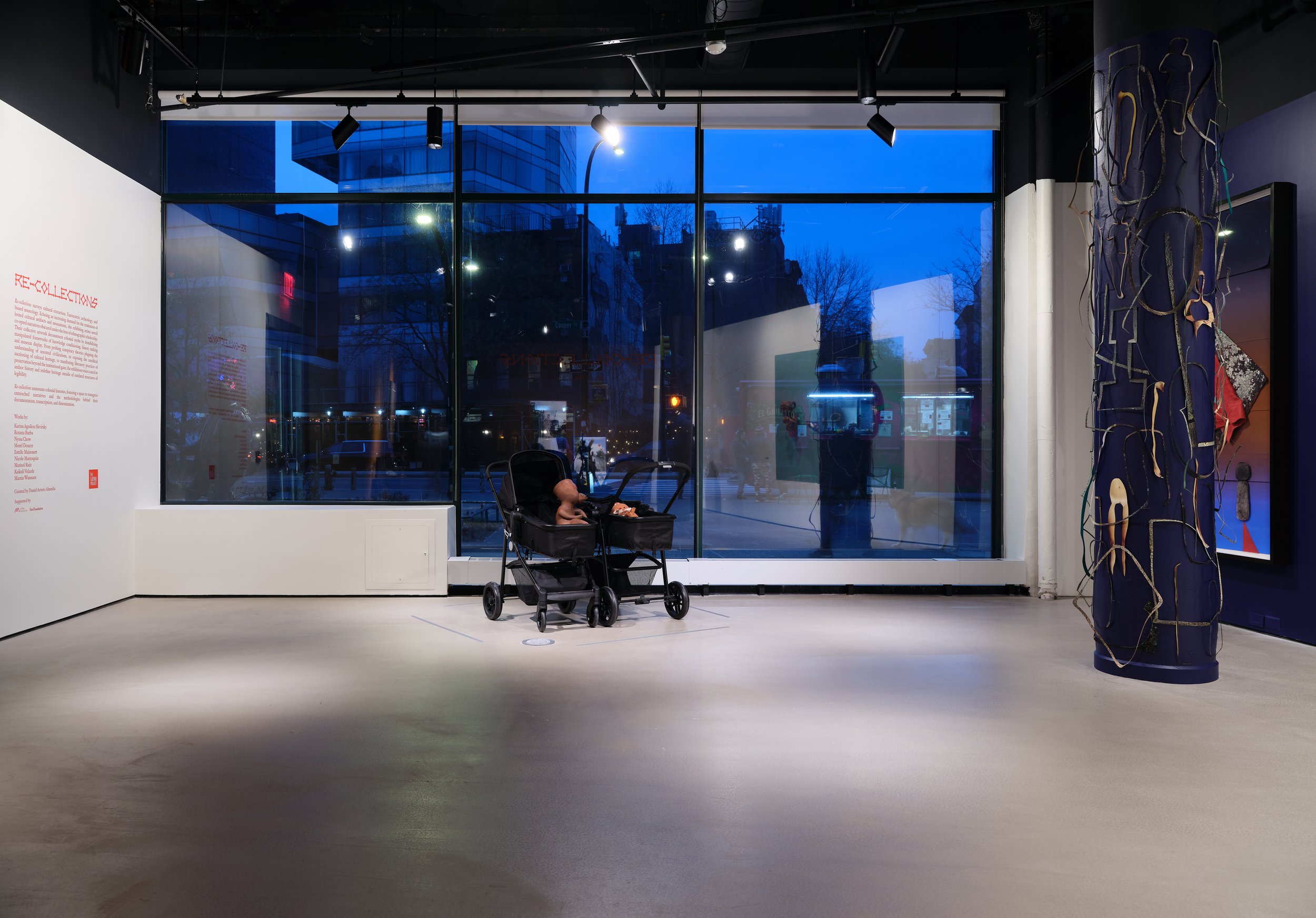
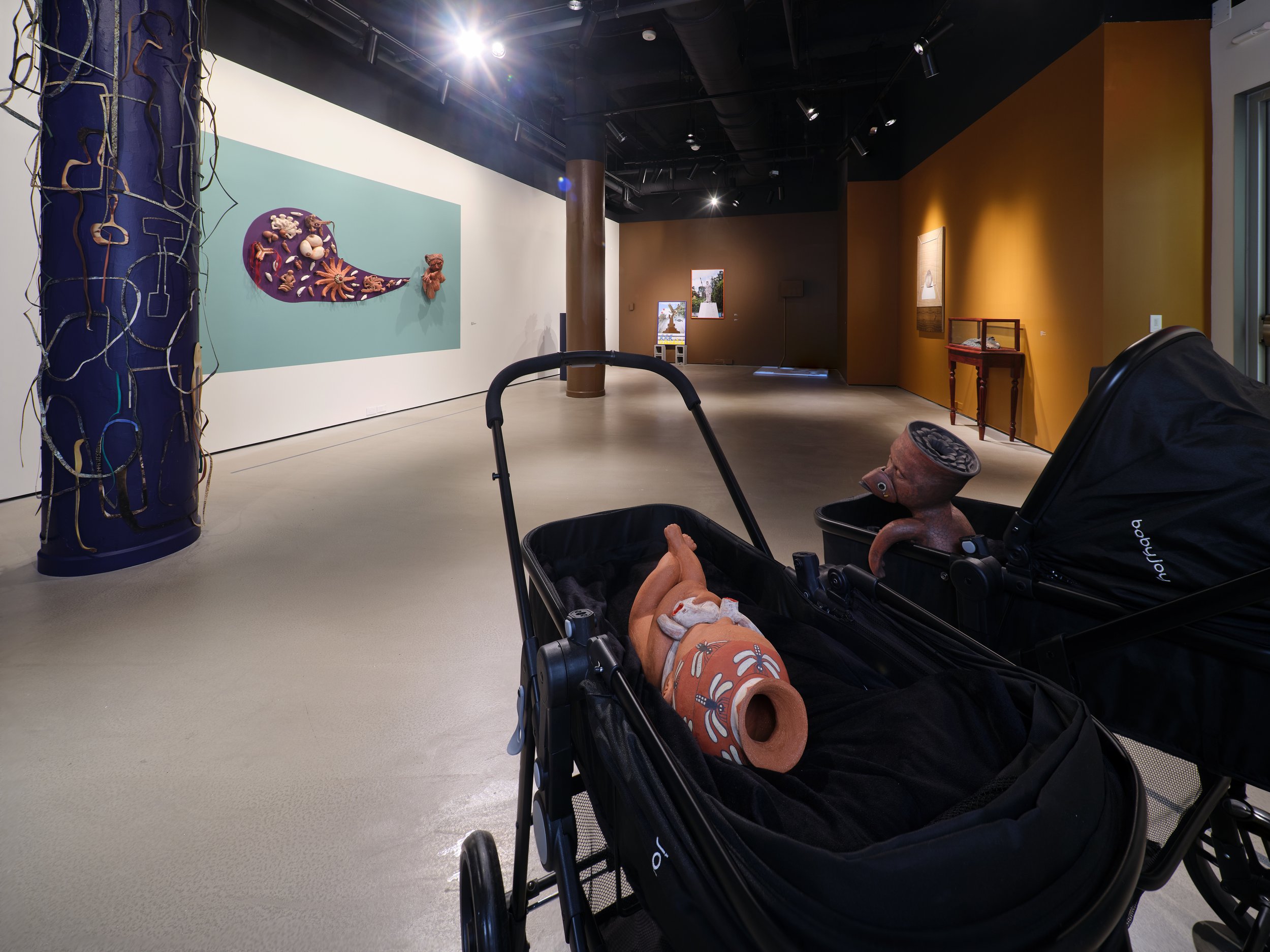

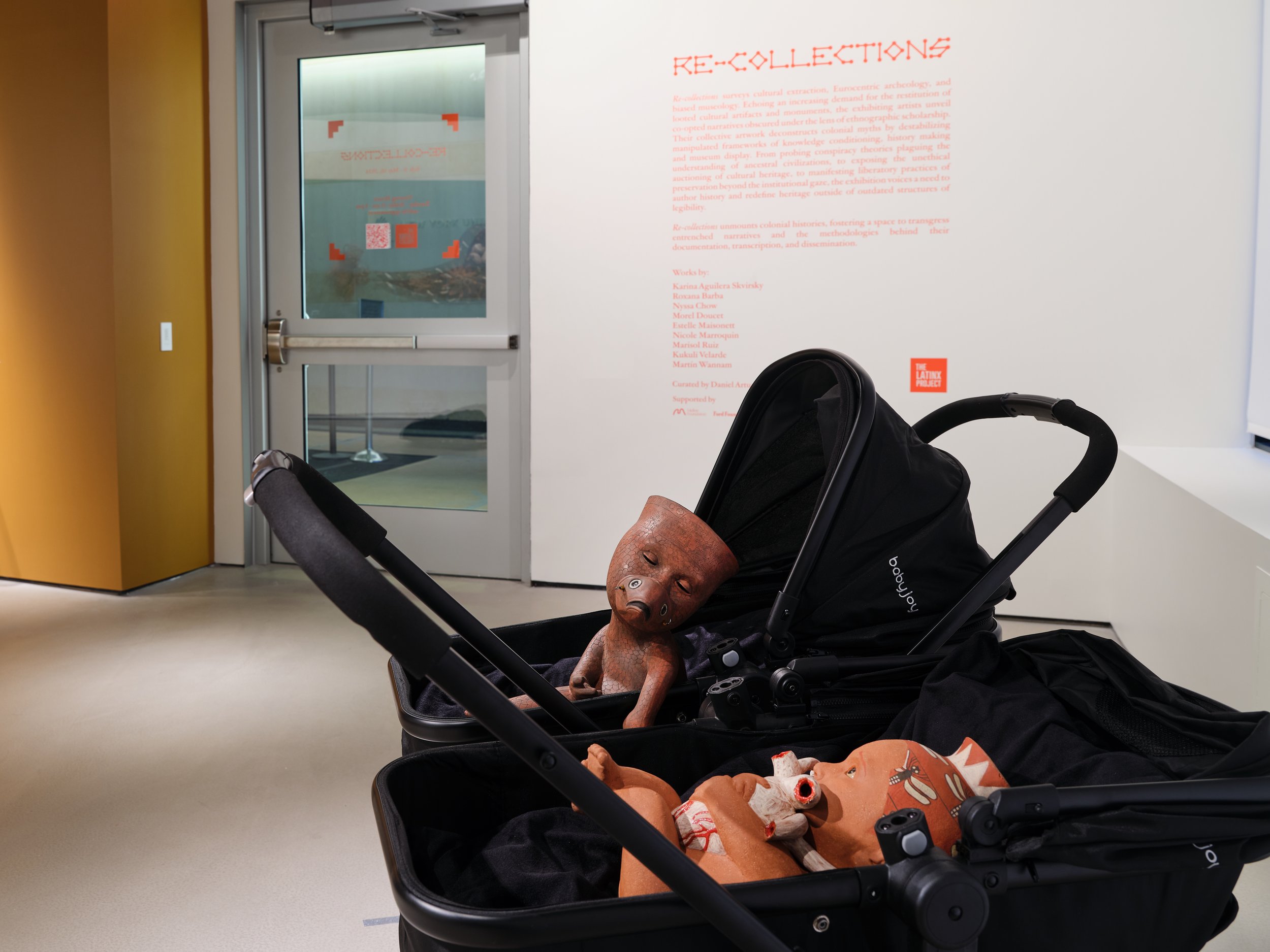
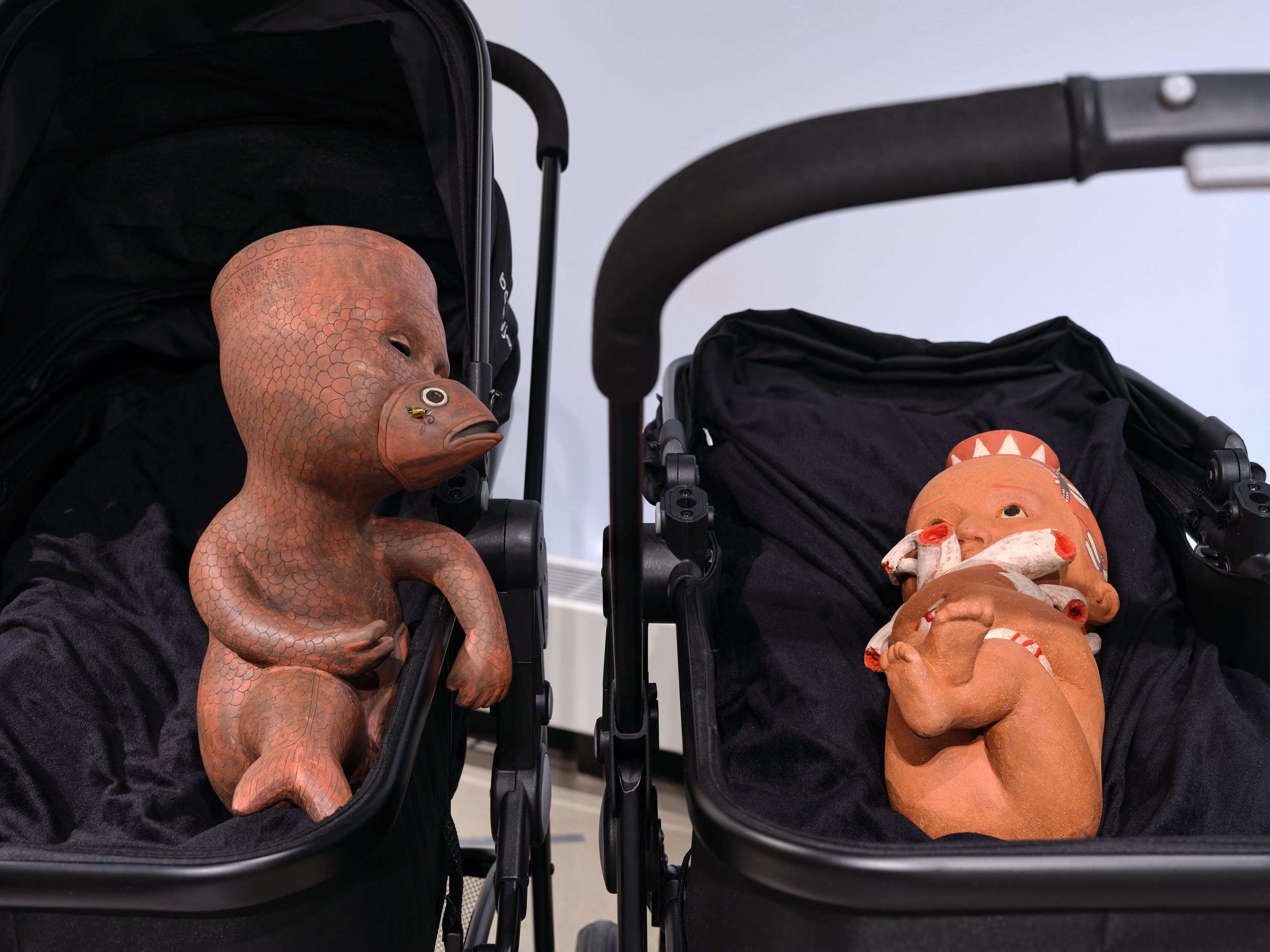
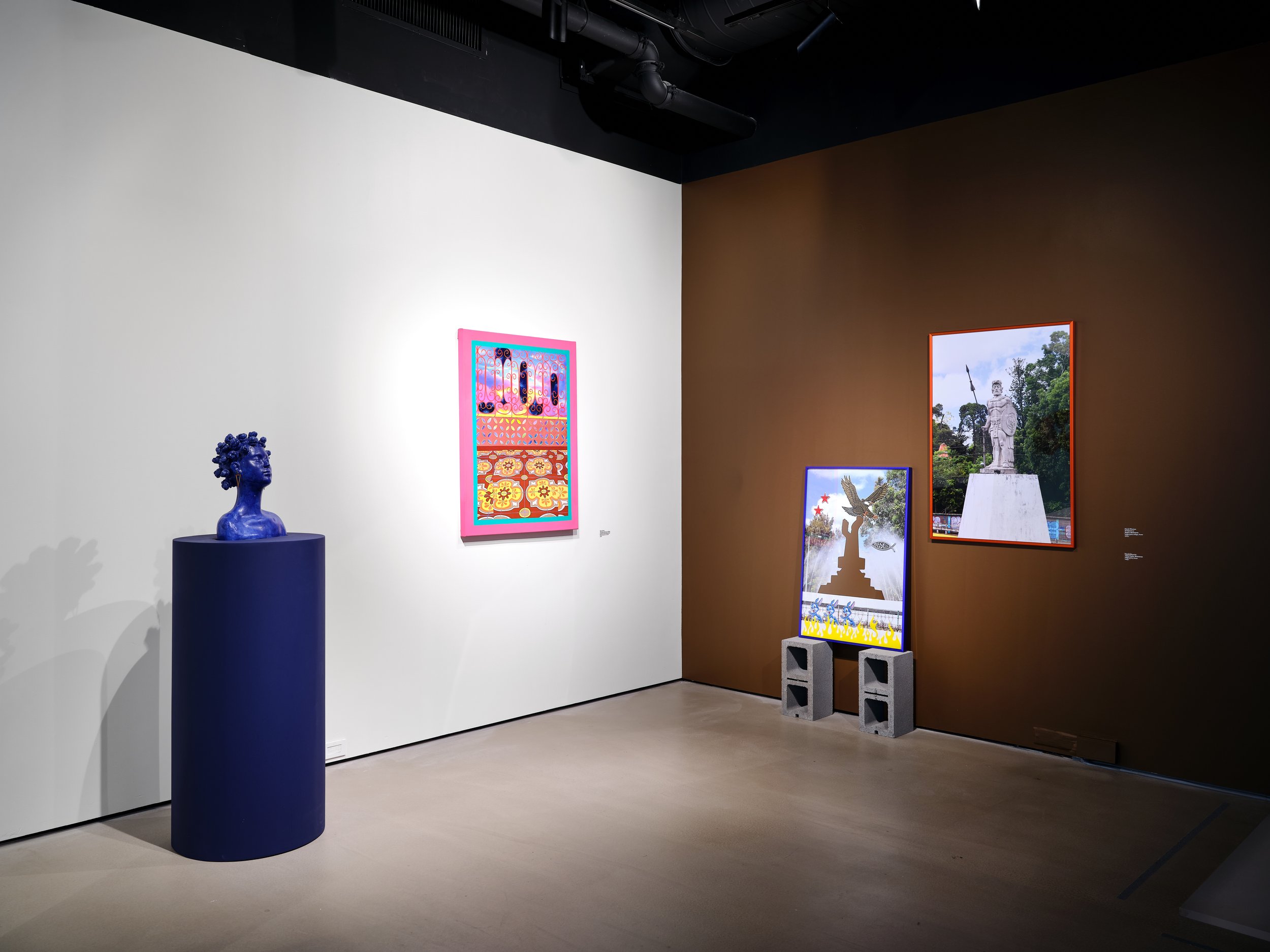
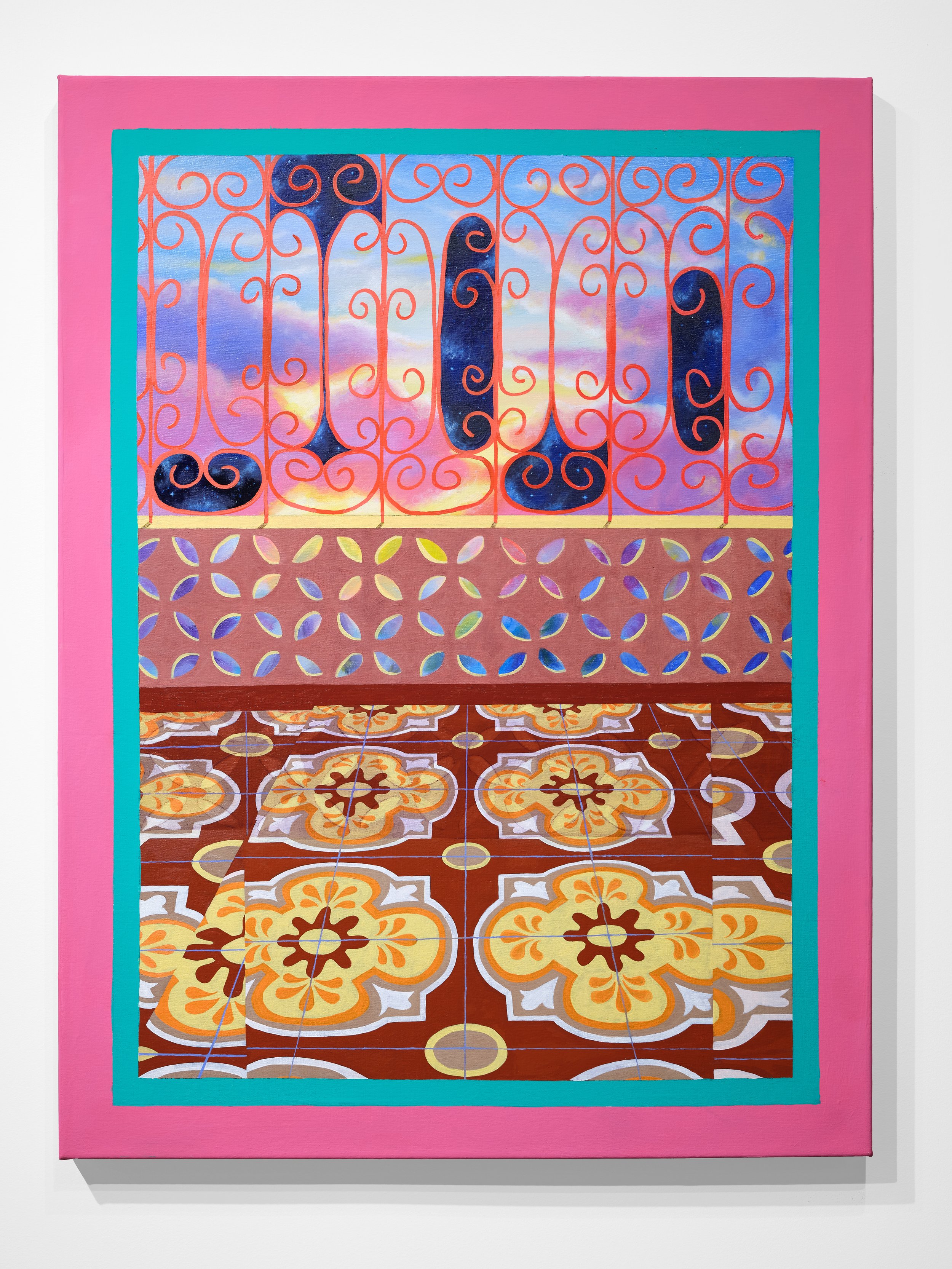
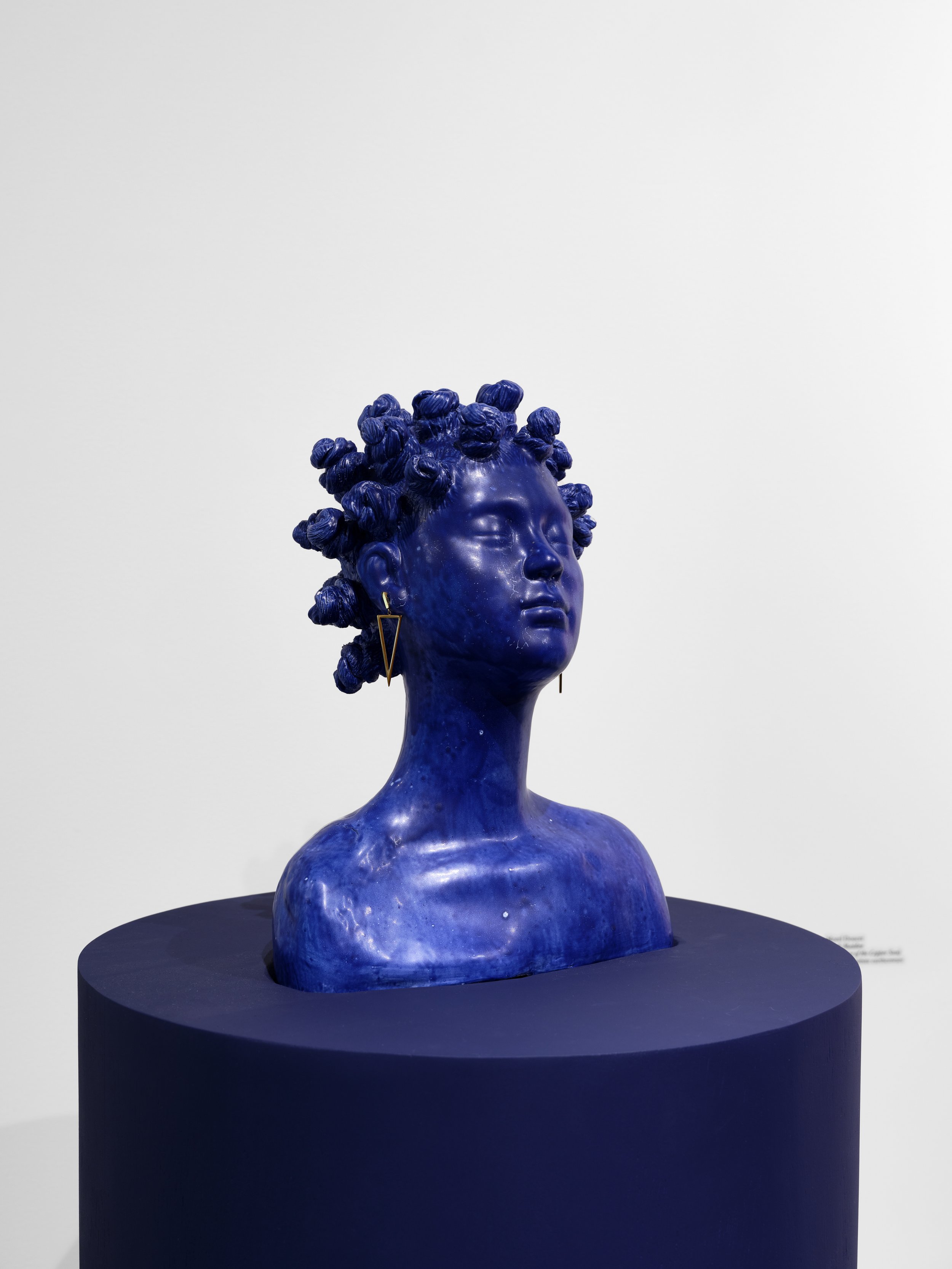
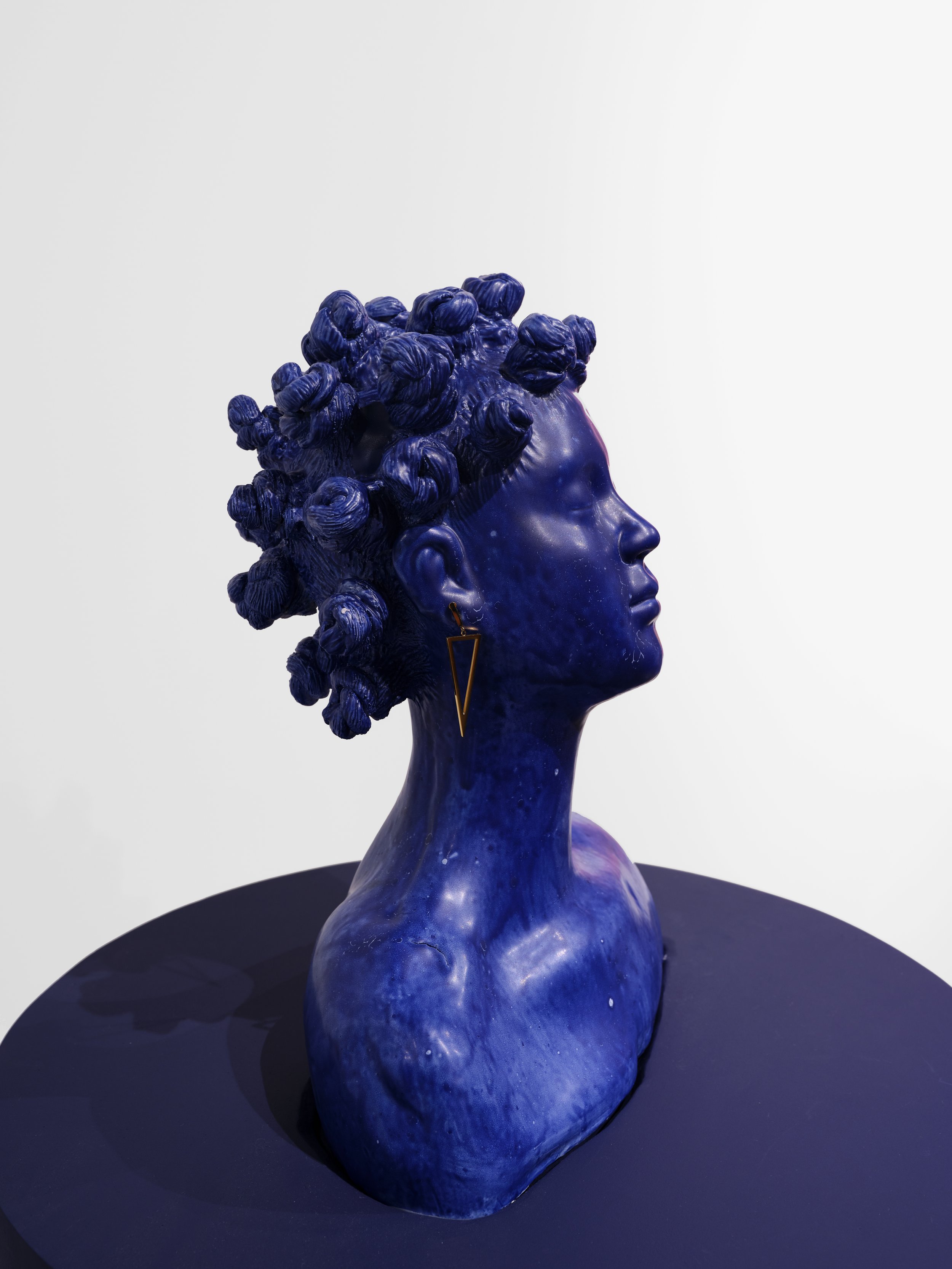
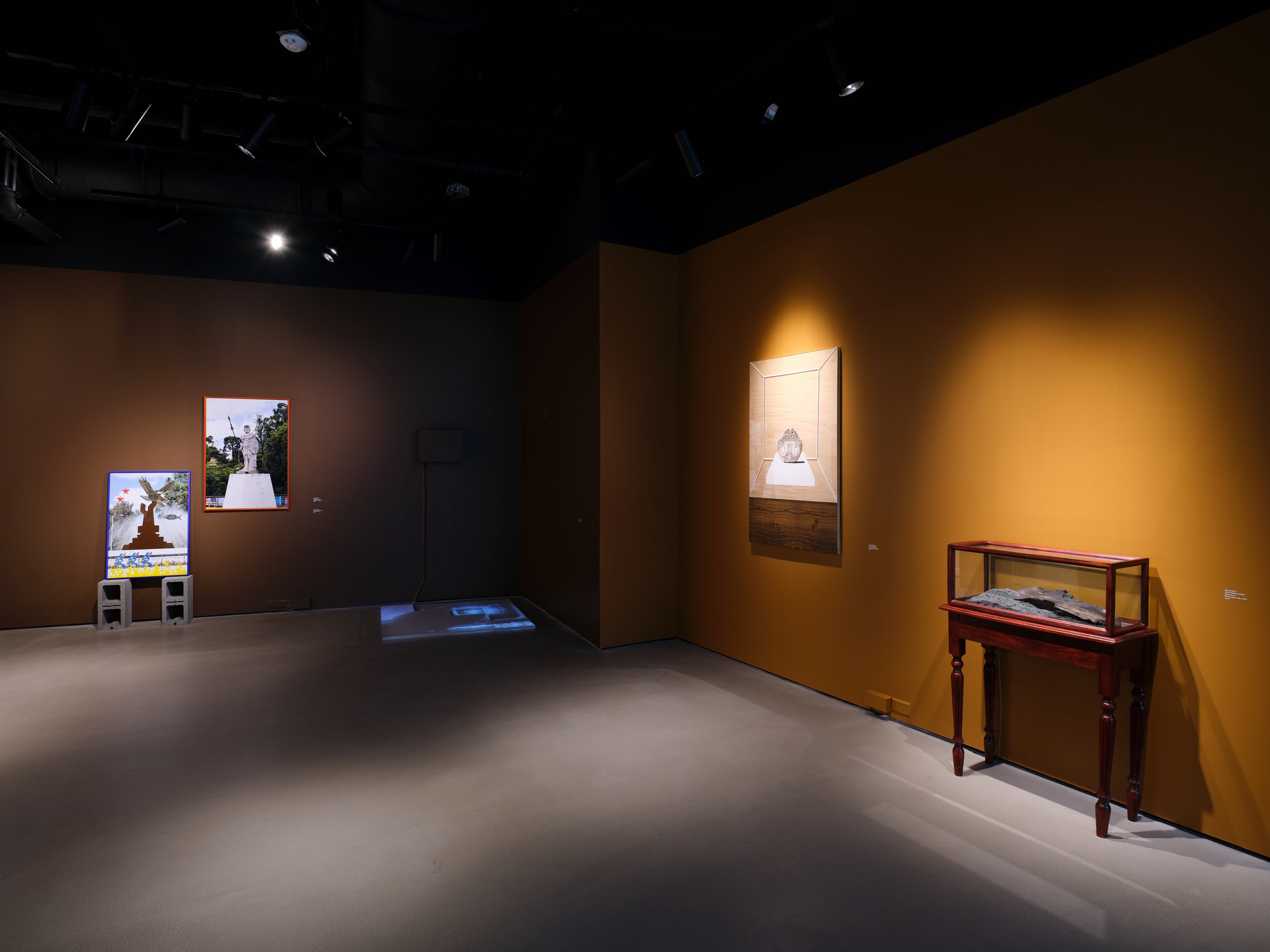
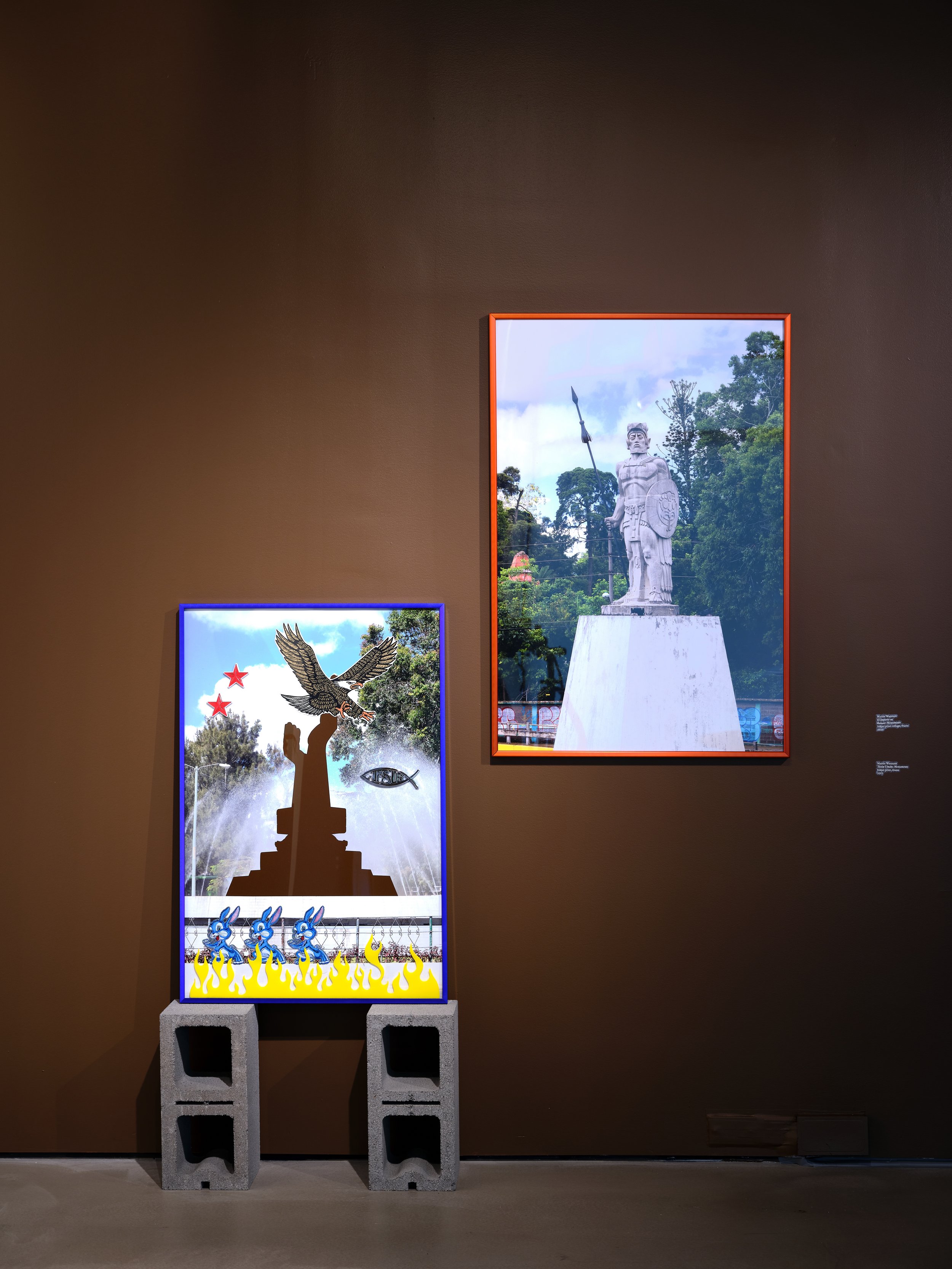
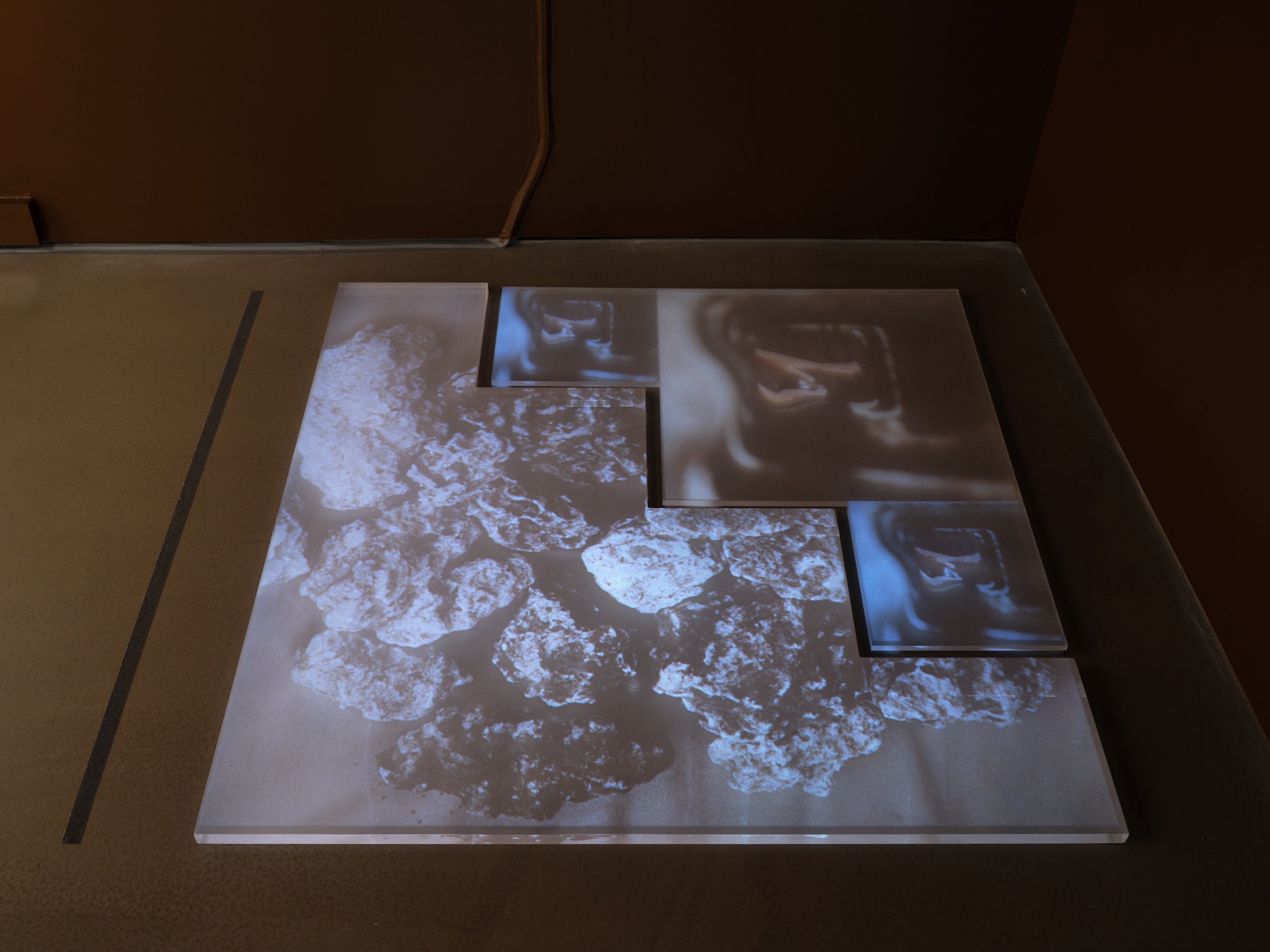
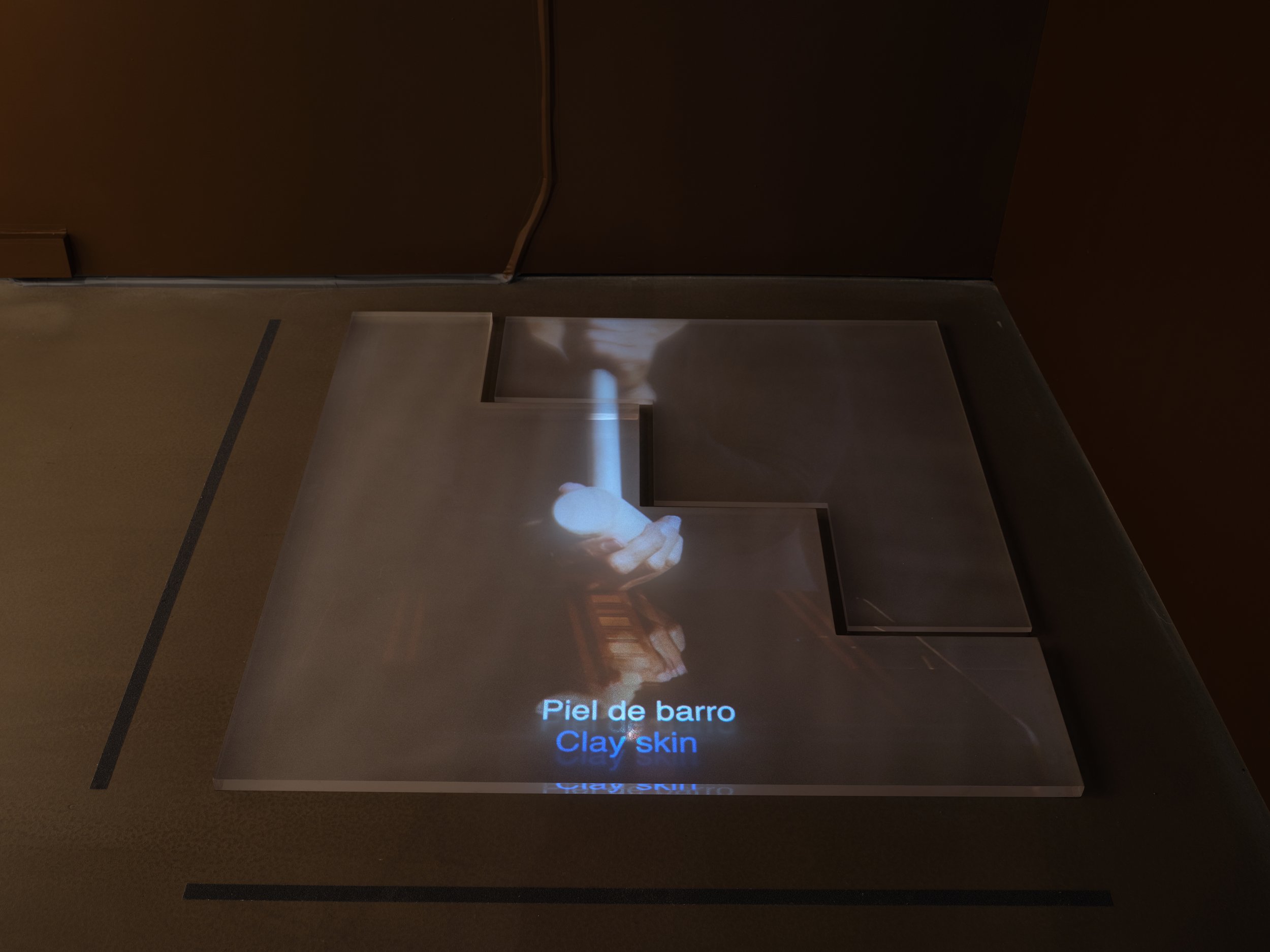
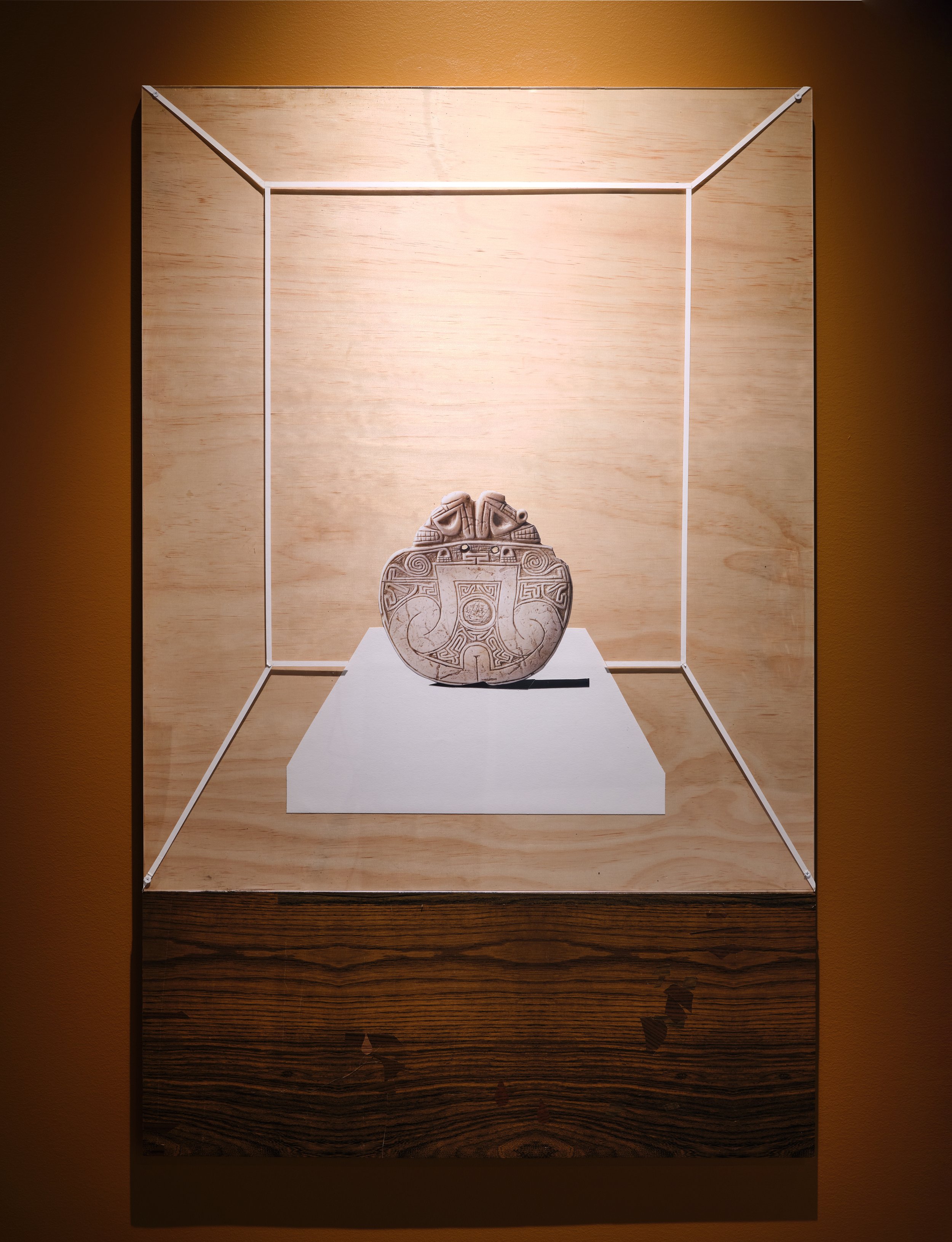
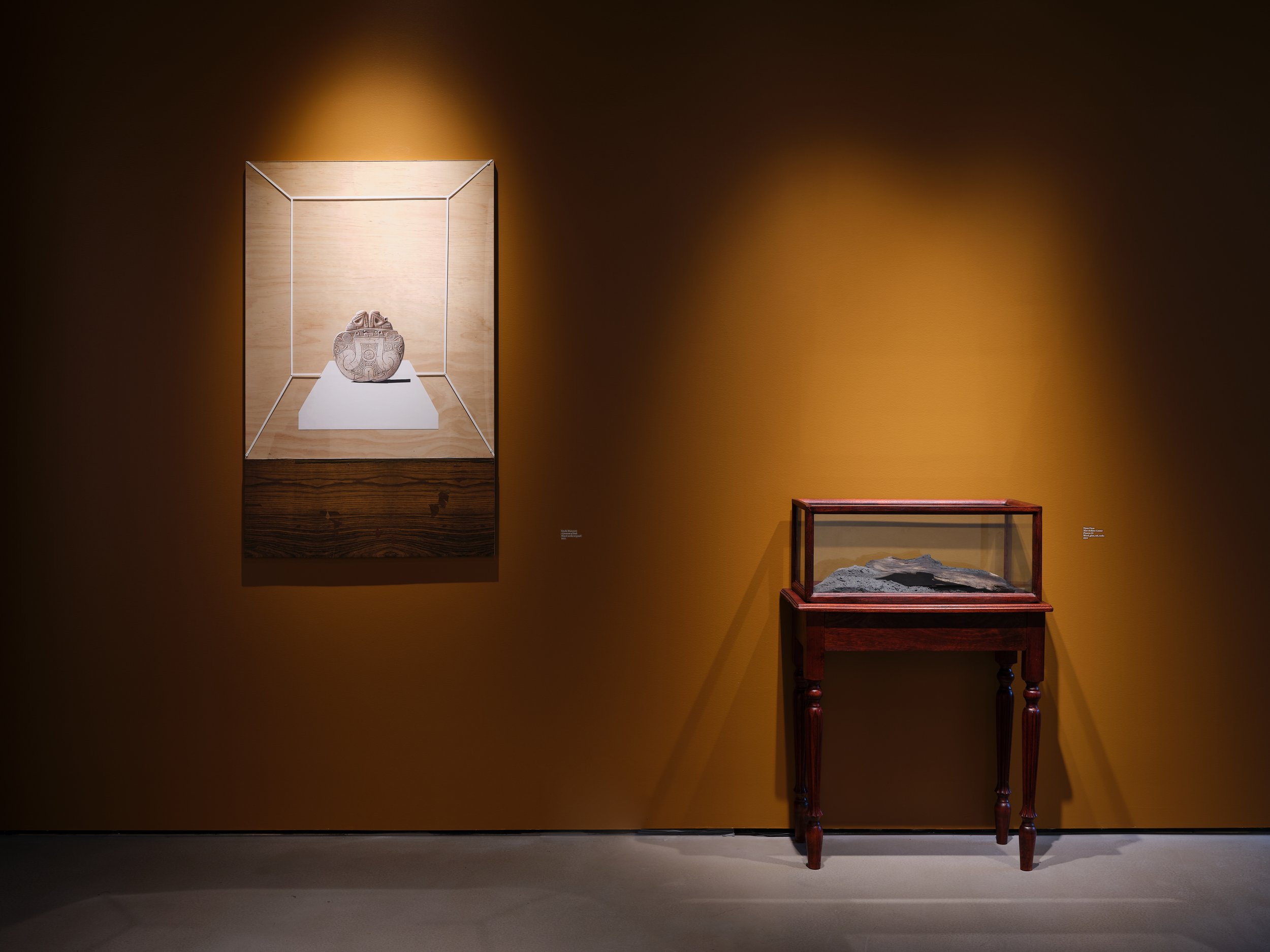
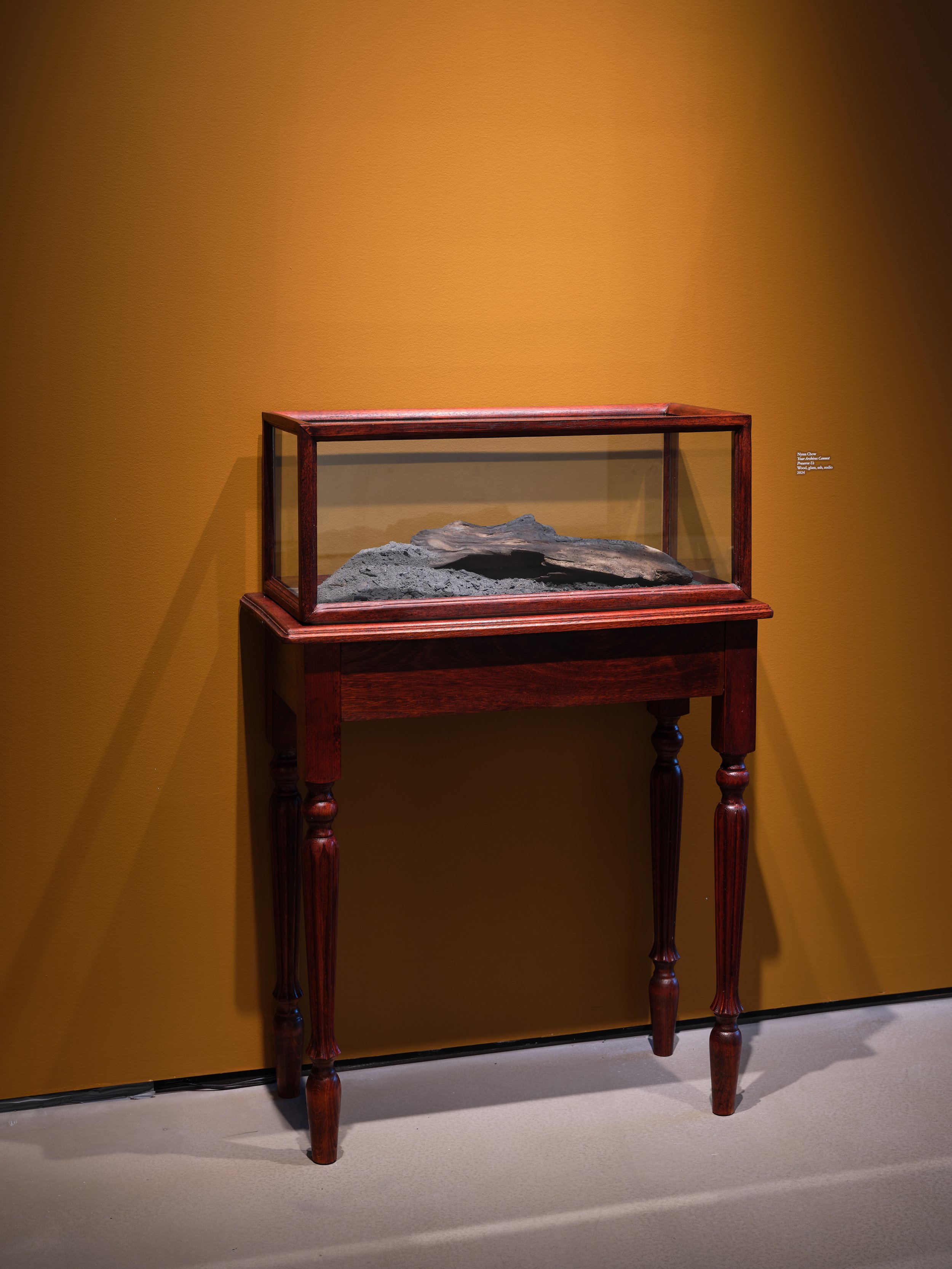
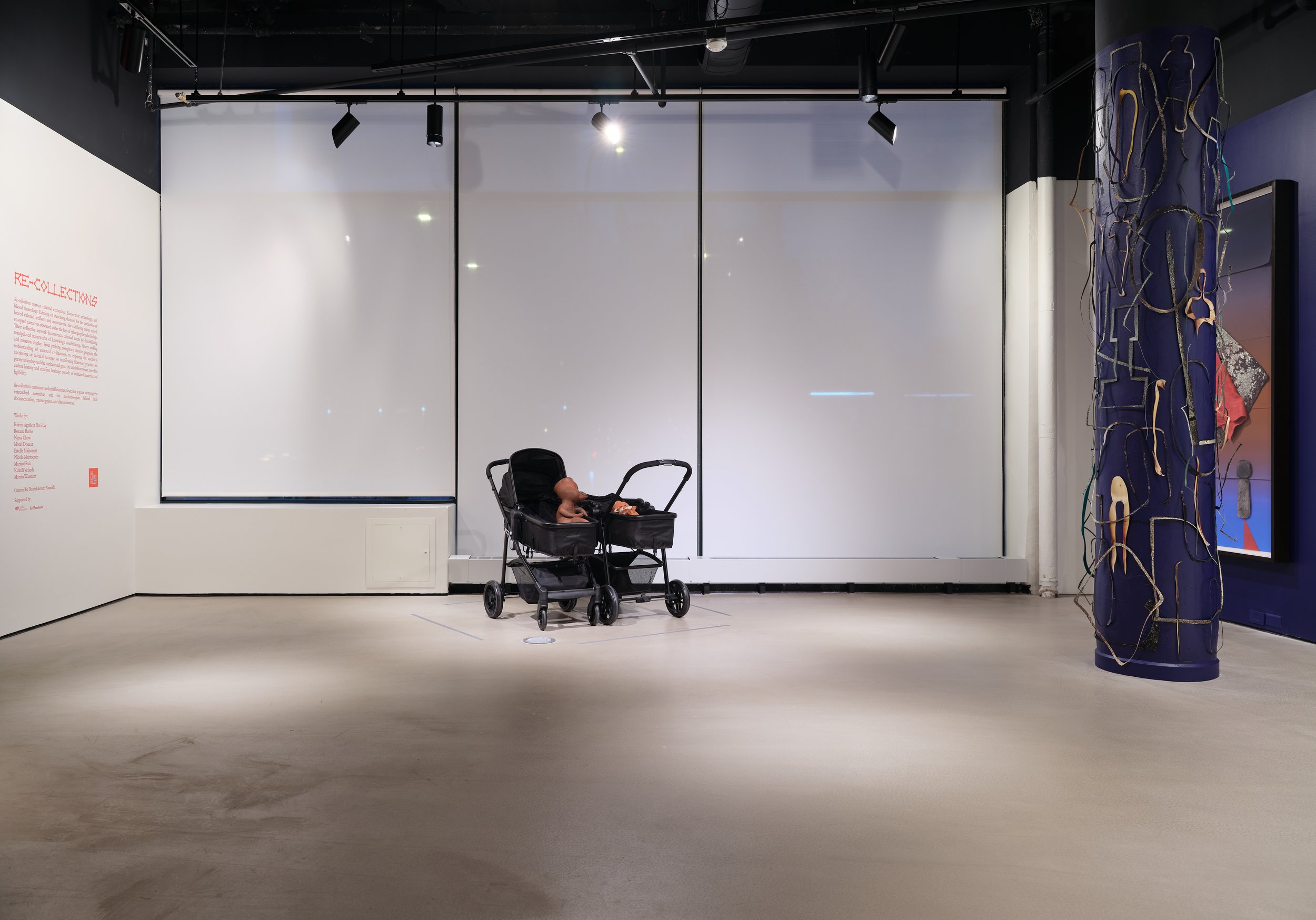
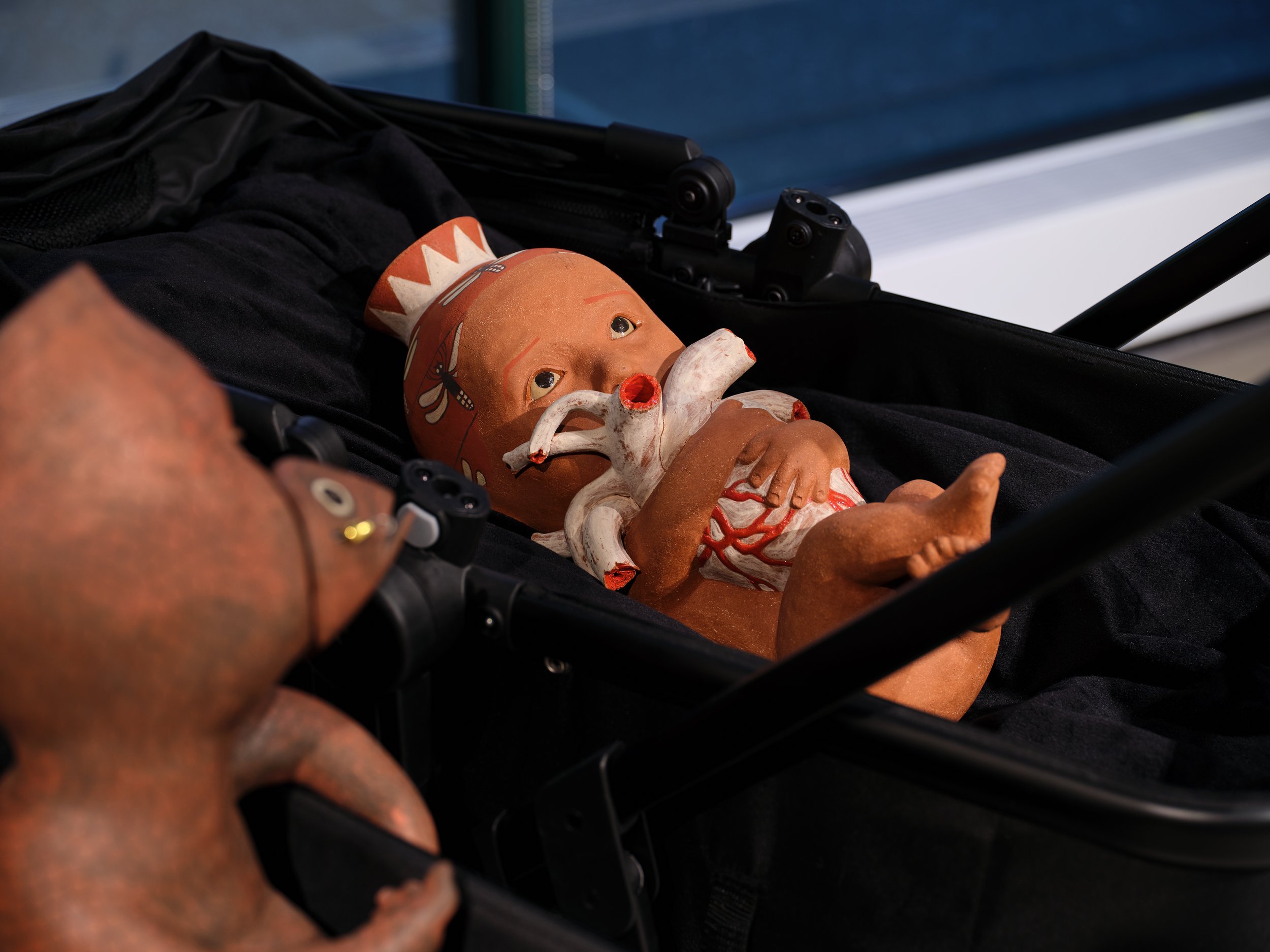
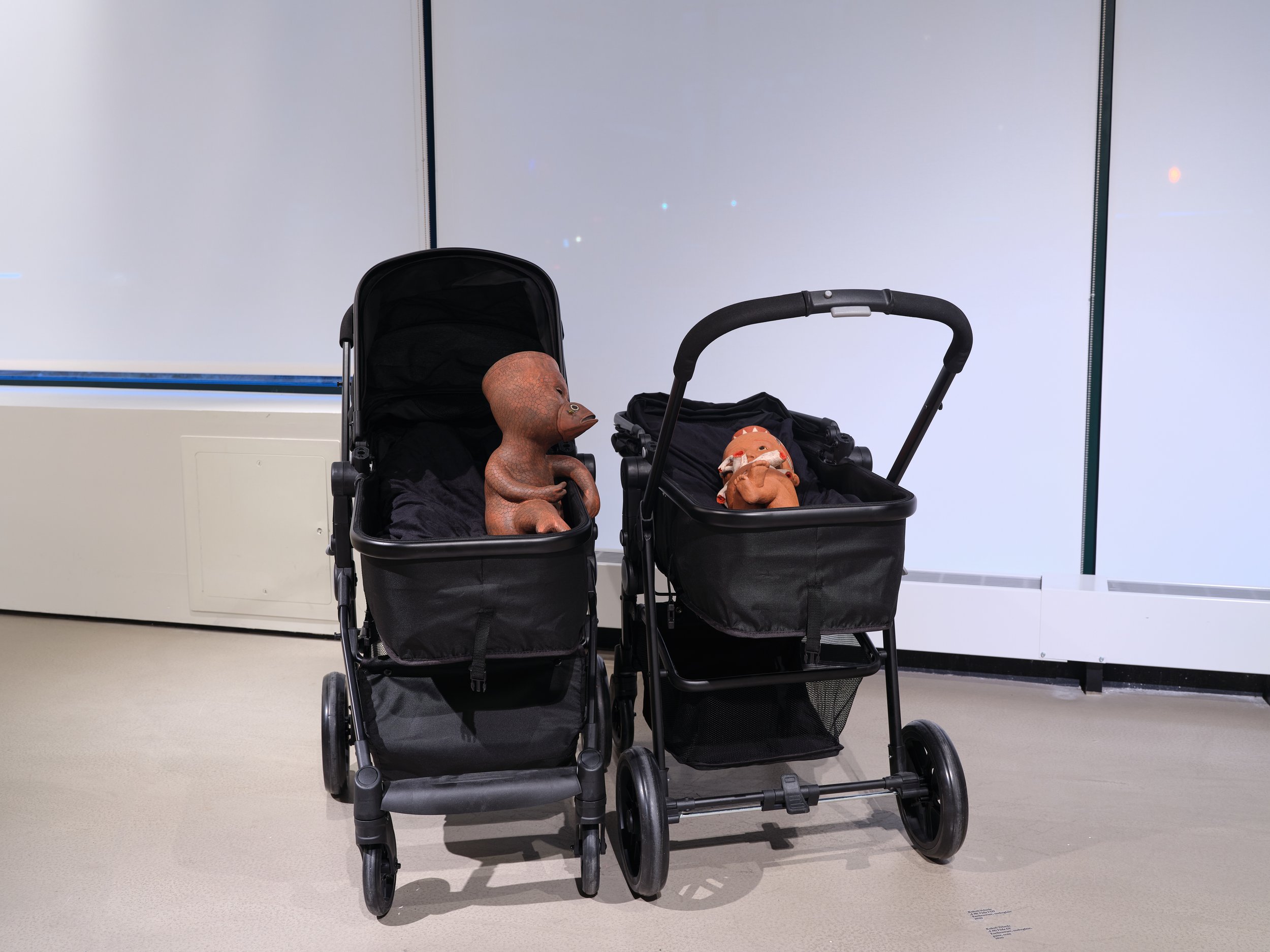
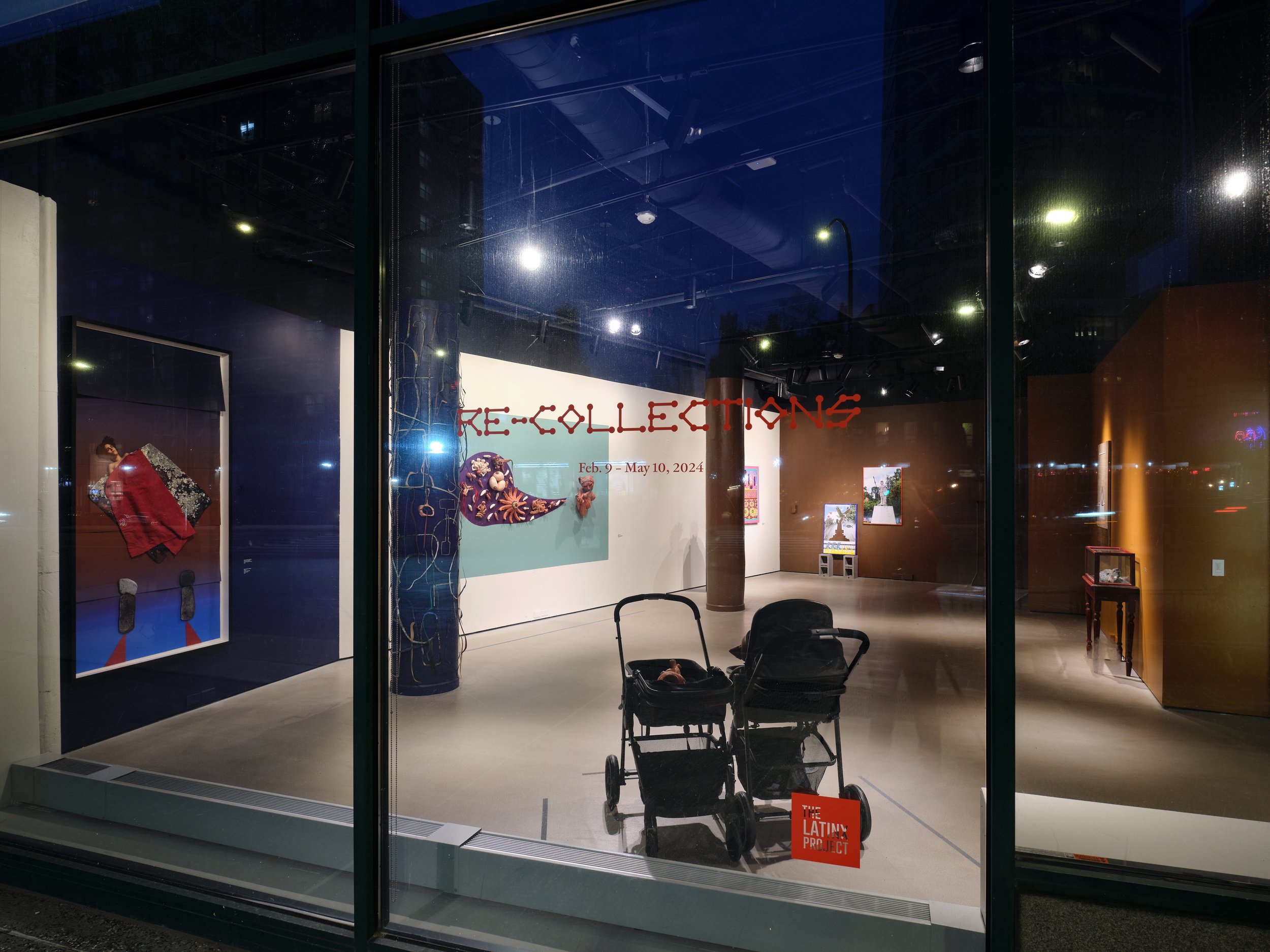

Guided Video Tour of the Exhibition by Curator, Daniel Arturo Almeida
Related Programming
About the Curator
Daniel Arturo Almeida (b. 1992, Caracas, Venezuela) is a cultural producer and transdisciplinary artist working through photography, installation, archiving, and public engagement. Daniel's practice chronicles intimate and collective stories that shape belief systems and hierarchies of power in the Americas. The product of generational migrations, Almeida researches images, music, anecdotes, and documents portraying nationalism, nostalgia, and collective amnesia. Almeida has exhibited in The U.S.A in various institutions, galleries, and festivals, including A.I.R. Gallery, The Center for Art, Research, and Alliances (CARA), Tiger Strikes Asteroids, La Salita Project, Columbia Teachers College, Bridge Red Studios, Satellite Art Show, and the SVA Chelsea Galleries, among others. Almeida was a NEW INC member from 2021 to 2023, along with the co-founded collective, rico robo. His work has been reviewed in Hyperallergic and The Daily Lazy.
He holds an MFA in Fine Arts from the School of Visual Arts (2020) and a BFA in Art and Art History from Florida International University (2017). He currently works between Miami, FL, and New York, NY.
Daniel Arturo Almeida is a 2023-2024 open-call selected curator at The Latinx Project. Read our full interview with Almeida.
Visitation
20 Cooper Square Gallery, 1st floor
February 9 - May 10, 2024
Tuesday - Friday 11 a.m - 5 p.m
Supporters
Re-collections is made possible with support from the Andrew W. Mellon Foundation, the Ford Foundation, and the New York University Office of the Provost.









